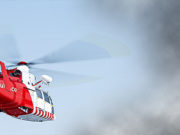
For those who manage risk in aviation organizations, it can be irritating when simplistic news reports start hitting the street about who is “No. 1 in airline safety.” While the airlines that receive the highest marks probably don’t complain, you can bet they aren’t being very boastful, either. They know the challenges in monitoring everything in their operations. They know about the layers of protection they depend on, what they’ve built into their systems and integrated with other organizations, and they know that at any given time, those layers could be penetrated by some innocuous event or compromised by somebody or something beyond their control.
It’s that kind of attitude that makes a big difference in this industry. It’s why the most safety-conscious airlines are never satisfied with the protections they have built, and they are always looking for a better way to reduce their risks. It’s why the collective efforts of all airlines, their business partners and the regulatory community have produced levels of safety that are unmatched in any other mode of transportation.
At Flight Safety Foundation, we are serious about raising the bar on safety. We know that airlines, airports, manufacturers, civil aviation authorities, investigative authorities and air traffic service providers constantly are looking for better ways to understand and enhance safety protections. The data that need to be examined to do this come from a variety of sources — voluntary safety reporting programs, flight data monitoring systems, air traffic controller safety reporting systems, radar data, and accident investigation reports, to name only a few.
Everyone who has a hand in looking at safety data collection and processing systems knows there is a lot of data to manage and analyze — way beyond the latest accident rates or findings of government inspections. Ongoing equipment maintenance processes and training programs are managing risk and being tweaked all the time to produce higher levels of reliability and safety. Collaboration on safety data is likely to go much further in the future than it has in the past. We are researching this trend in the FSF Global Safety Information Project (GSIP) initiative. We know that even the best in the industry want to find a better perspective on safety data because they know that the data insights they currently have are not enough.
The reality is that many airlines have gone long stretches of time without an accident-caused fatality — so many that this metric is no longer an accomplishment that sets them apart in safety performance. I am not knocking the efforts and intentions of consumer groups that produce safety ratings, but the level of sophistication in data collection and analysis required by our industry far eclipses what such outside groups have produced.
Airline safety experts know well what data are needed to manage their risks in flight operations, so how can they accept the judgment of groups that have far less information and insight than they do?
Mark Millam is Vice President, Technical at Flight Safety Foundation.


